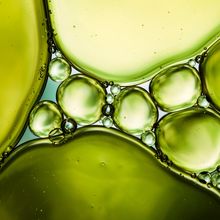phase separation

Ankur Jain Explores RNA Aggregations in Neurodegenerative Disease
Hannah Thomasy, PhD | Oct 3, 2022 | 3 min read
The MIT biologist studies how RNA molecules self-assemble and the role these accumulations may play in diseases such as ALS and Huntington’s.

2023 Breakthrough Prizes Showcase Research in AI and Narcolepsy
Amanda Heidt | Sep 22, 2022 | 2 min read
Three prizes were awarded to six researchers working across the life sciences on cellular organization, protein structure, and the genetic underpinnings of a chronic sleep disorder.

Fungal Cold Adaptation Linked to Protein Structure Changes: Study
Patience Asanga | Sep 20, 2022 | 4 min read
Environmental pressure seems to spawn changes in the intrinsically disordered regions of enzymes in polar yeasts, allowing them to adapt to extreme cold.

Stress-Induced Molecular Globs Boost Bacterial Fitness
Ruth Williams | Oct 21, 2021 | 4 min read
Liquid conglomerations of molecules that form in bacterial cells in response to stress promote the cells’ survival, a study finds.

Newly Found Proteins Stop Fungal “Bleeding”
Viviane Callier | Nov 12, 2020 | 3 min read
Mechanically sensitive proteins called gellins sense and respond to protoplasm flowing out of severed hyphae, quickly sealing up injuries in these root-like structures of fungi.

Infographic: Paraspeckle Form and Function
Archa Fox | Dec 1, 2019 | 2 min read
What do scientists know about this membraneless nuclear body discovered less than two decades ago?

What Paraspeckles Can Teach Us About Basic Cell Biology
Archa Fox | Dec 1, 2019 | 10+ min read
Discovering a new type of subnuclear body taught me how pursuing the unexpected can lead to new insights—in this case, about long noncoding RNAs and liquid-liquid phase separation in cells.

Infographic: What Are Membraneless Organelles?
Michael Crabtree and Tim Nott | Dec 1, 2018 | 2 min read
The physical principles that dictate the formation of these subcellular compartments are simple, but they dictate the organelles’ complex functions.
